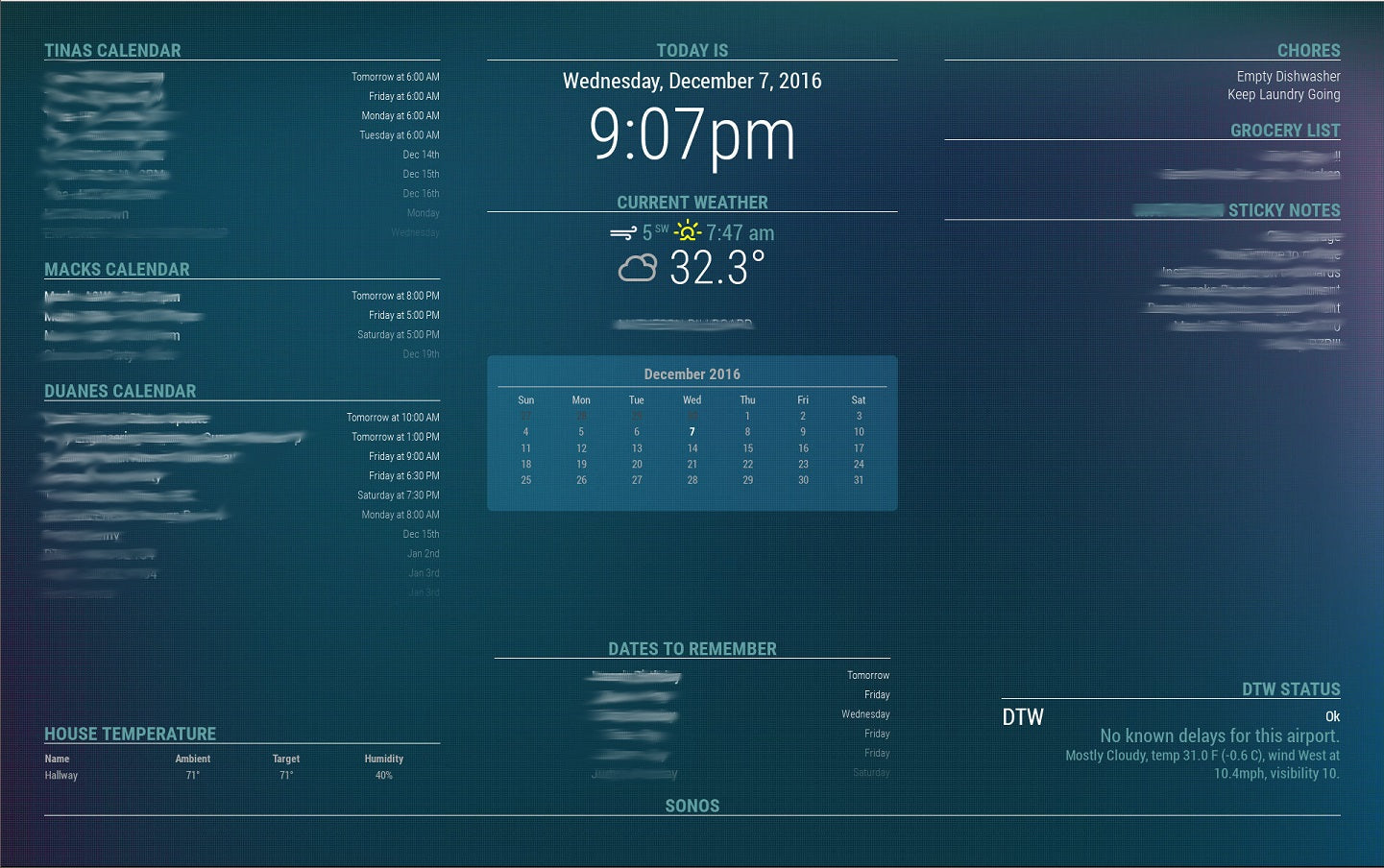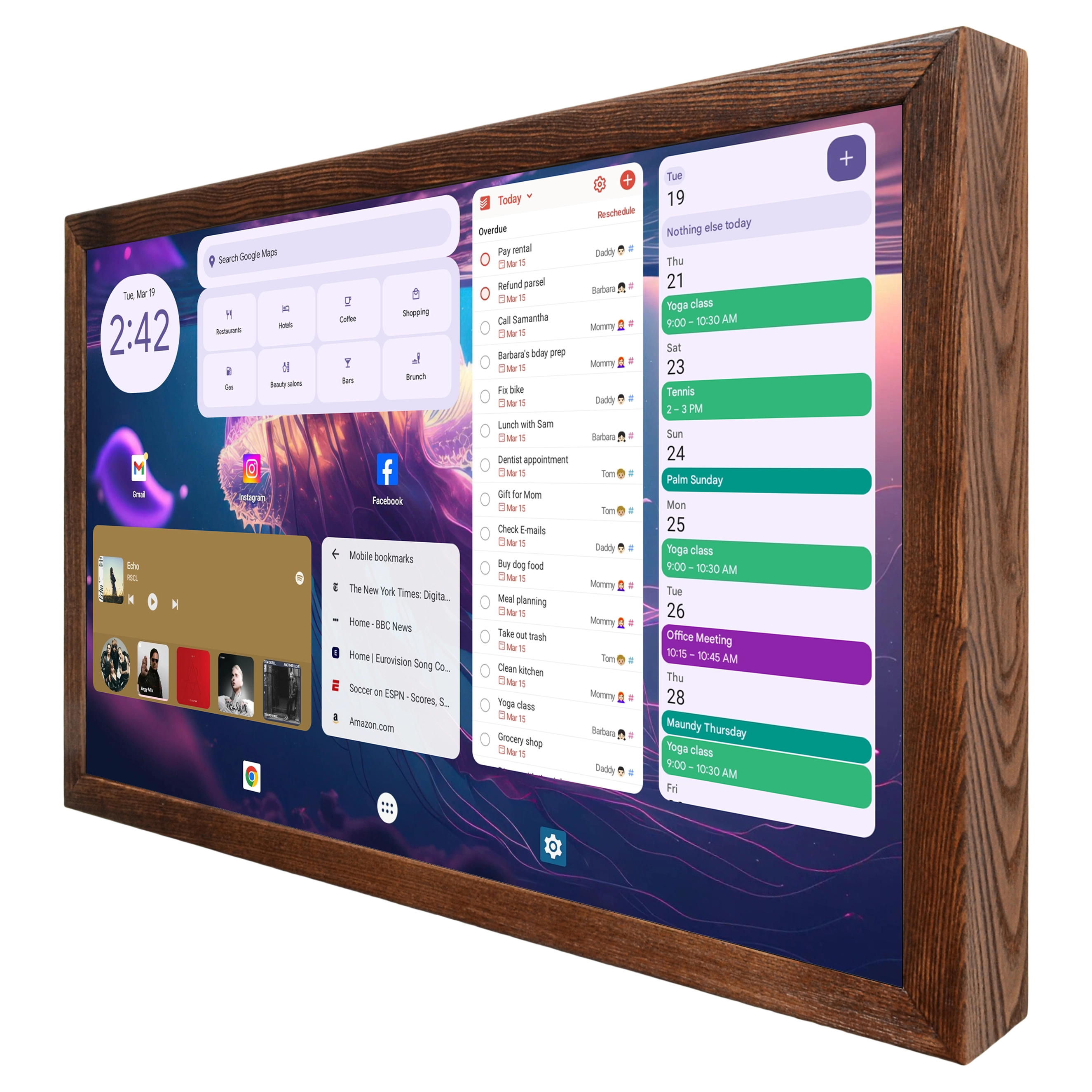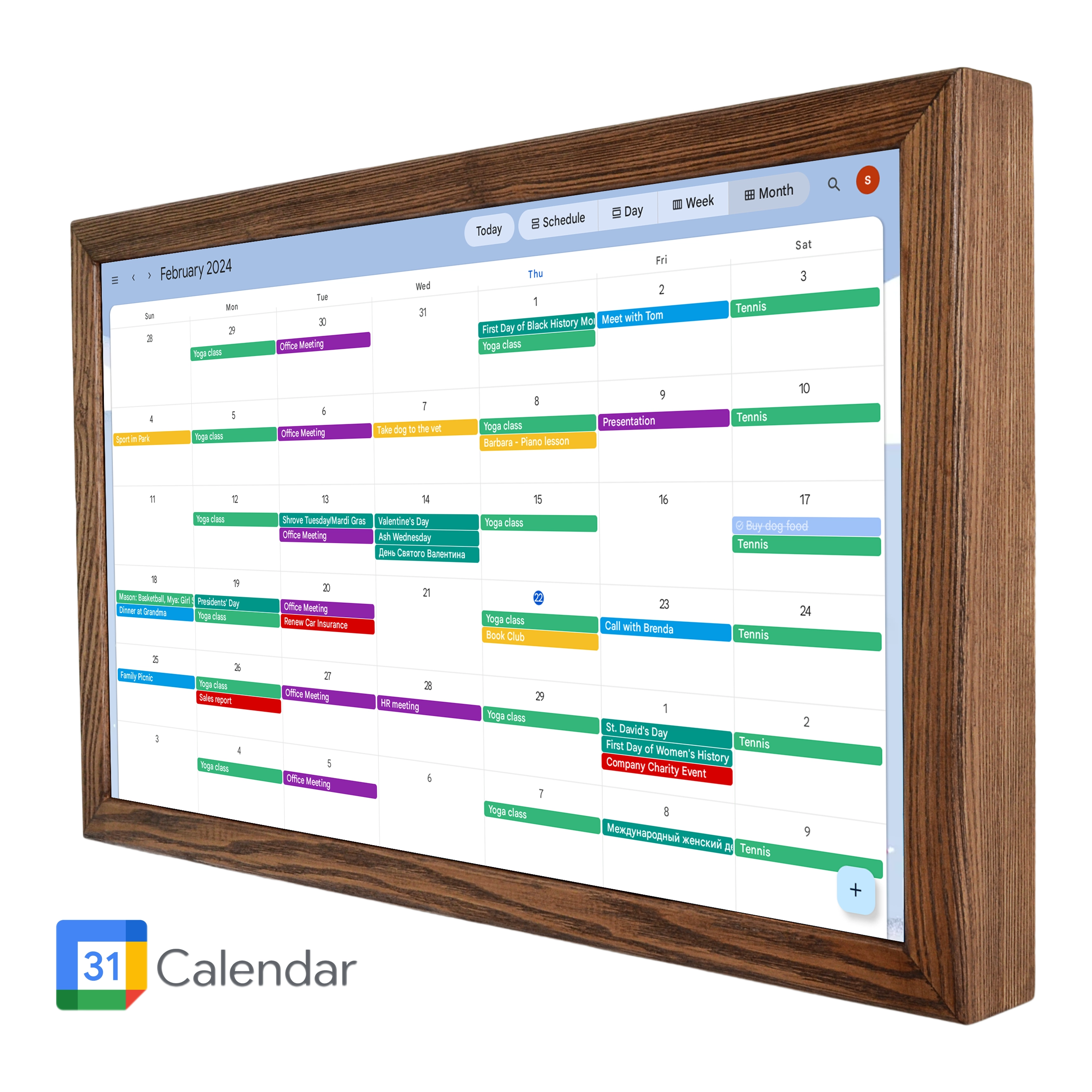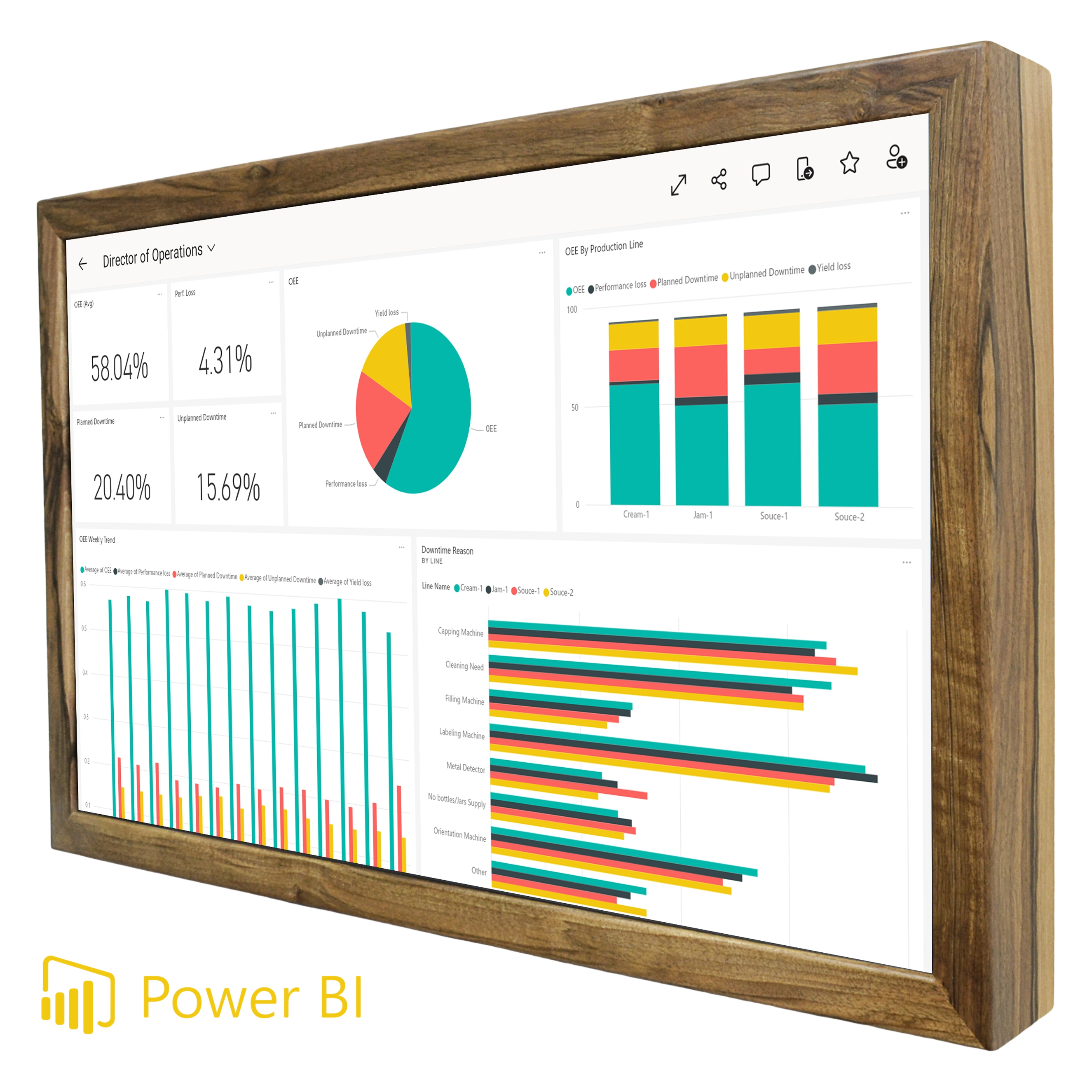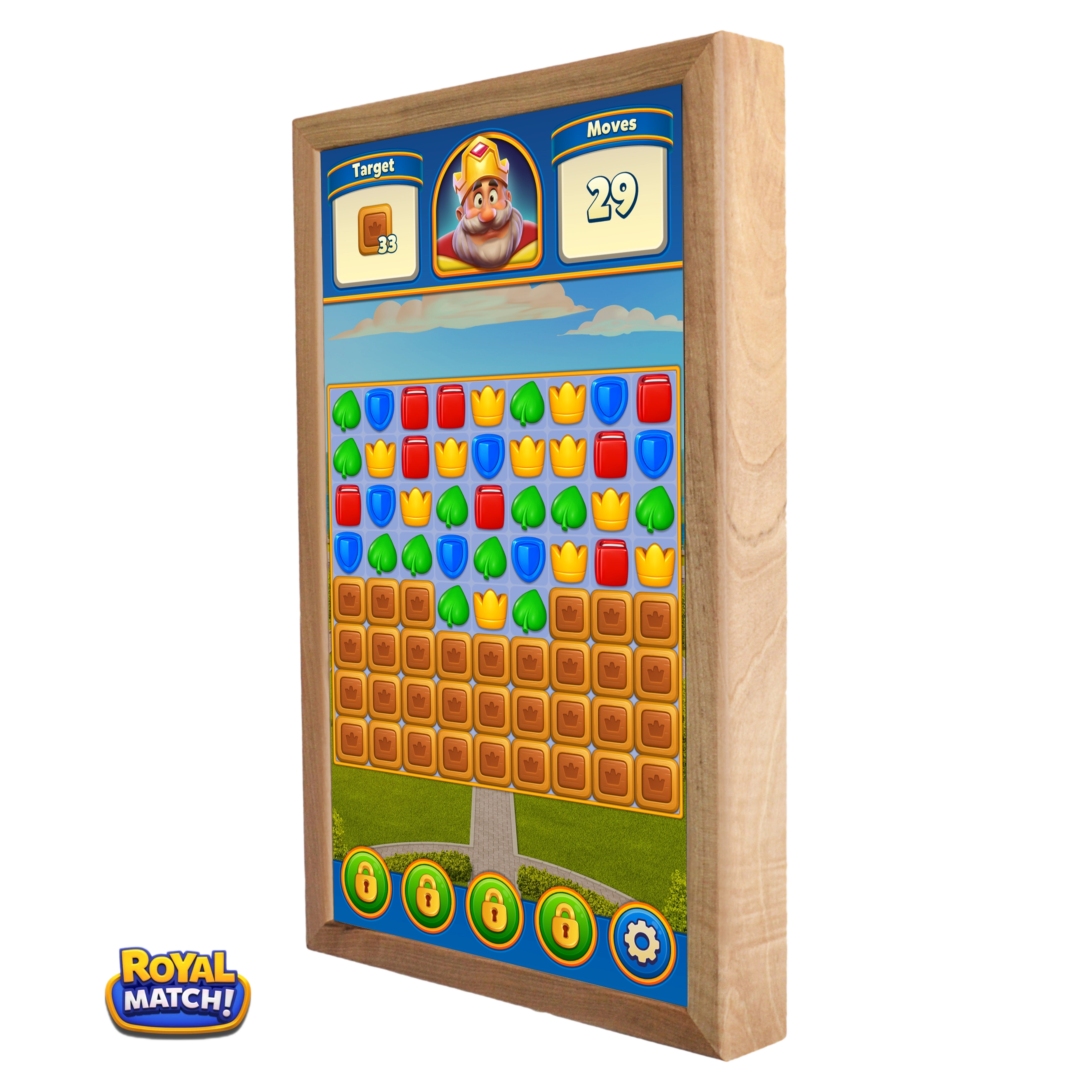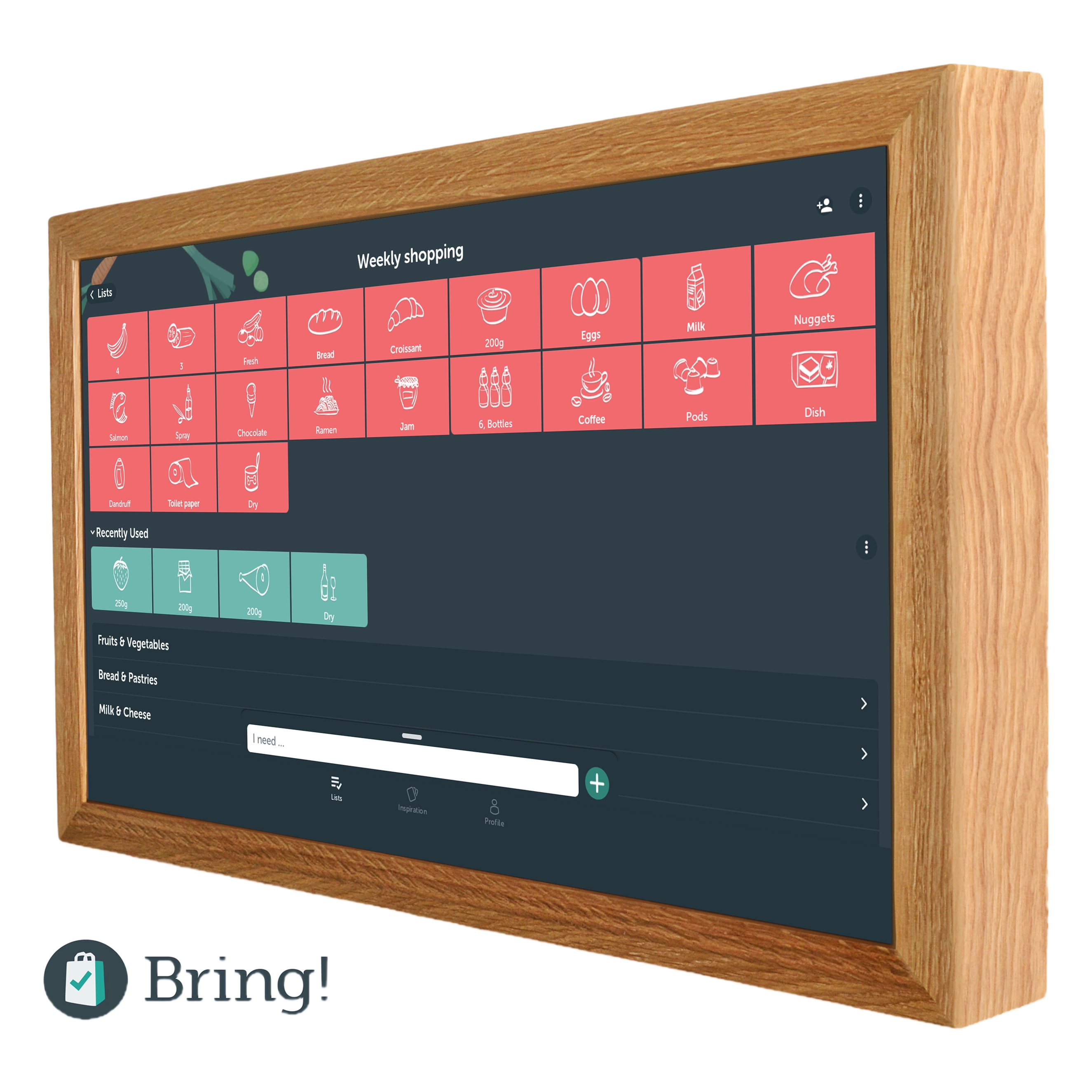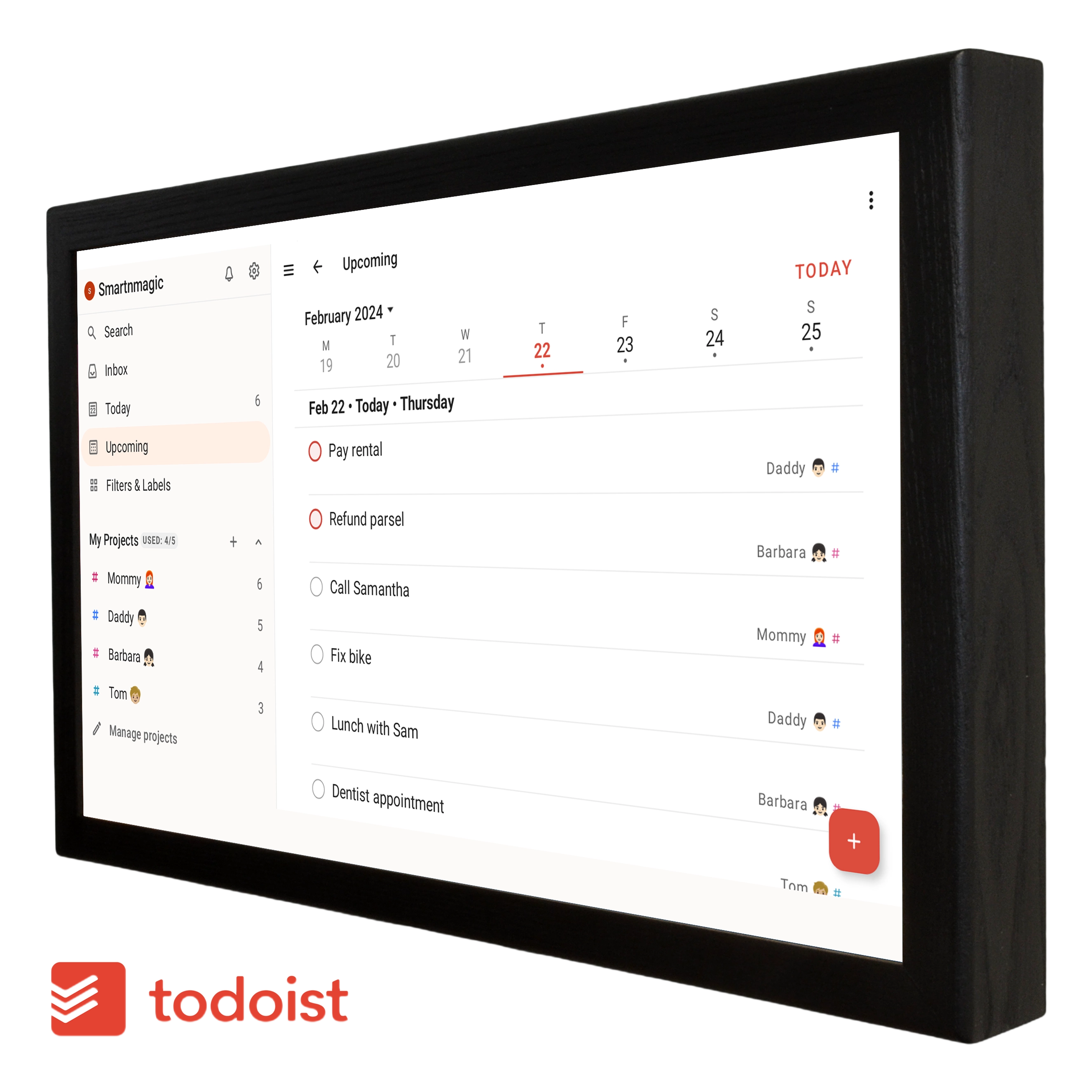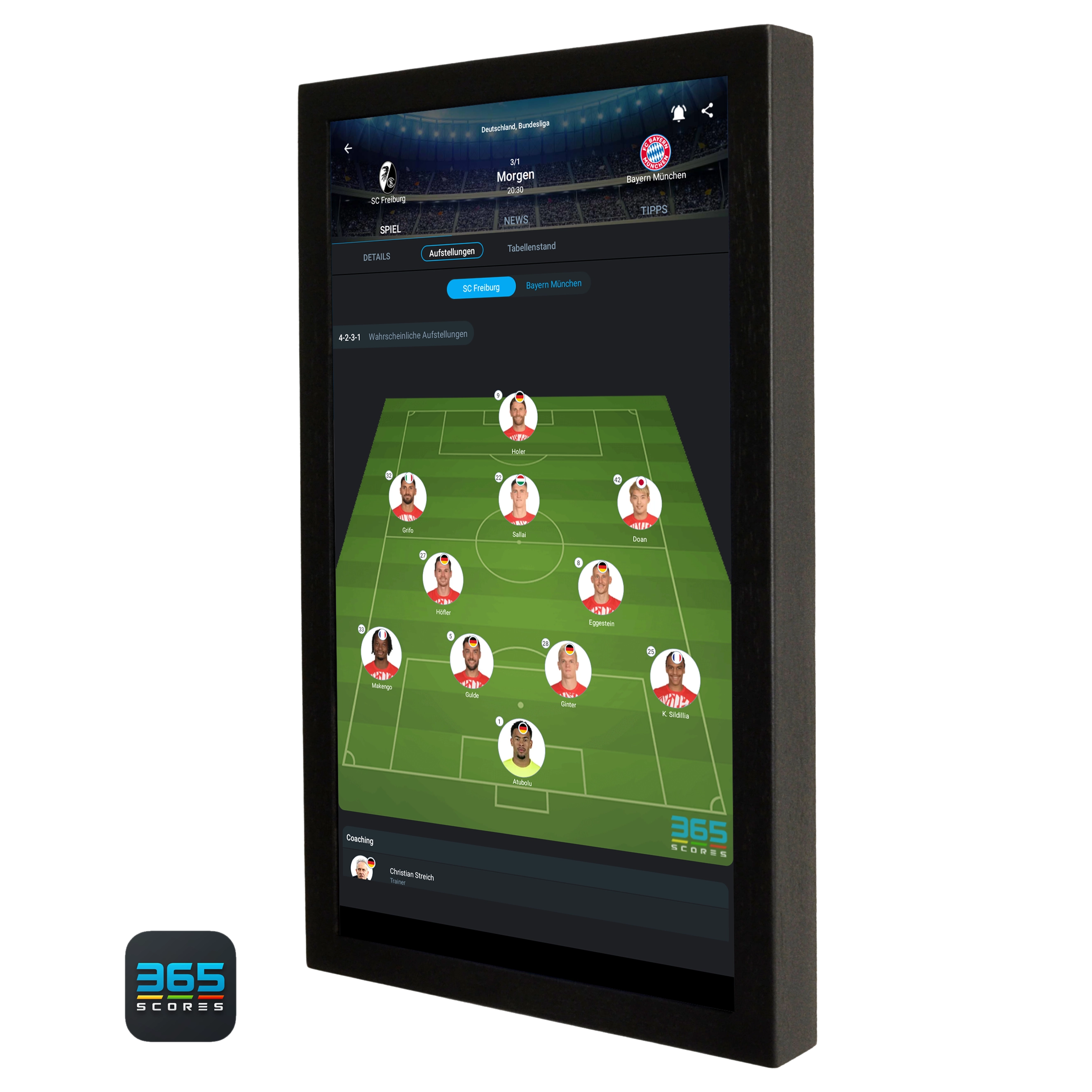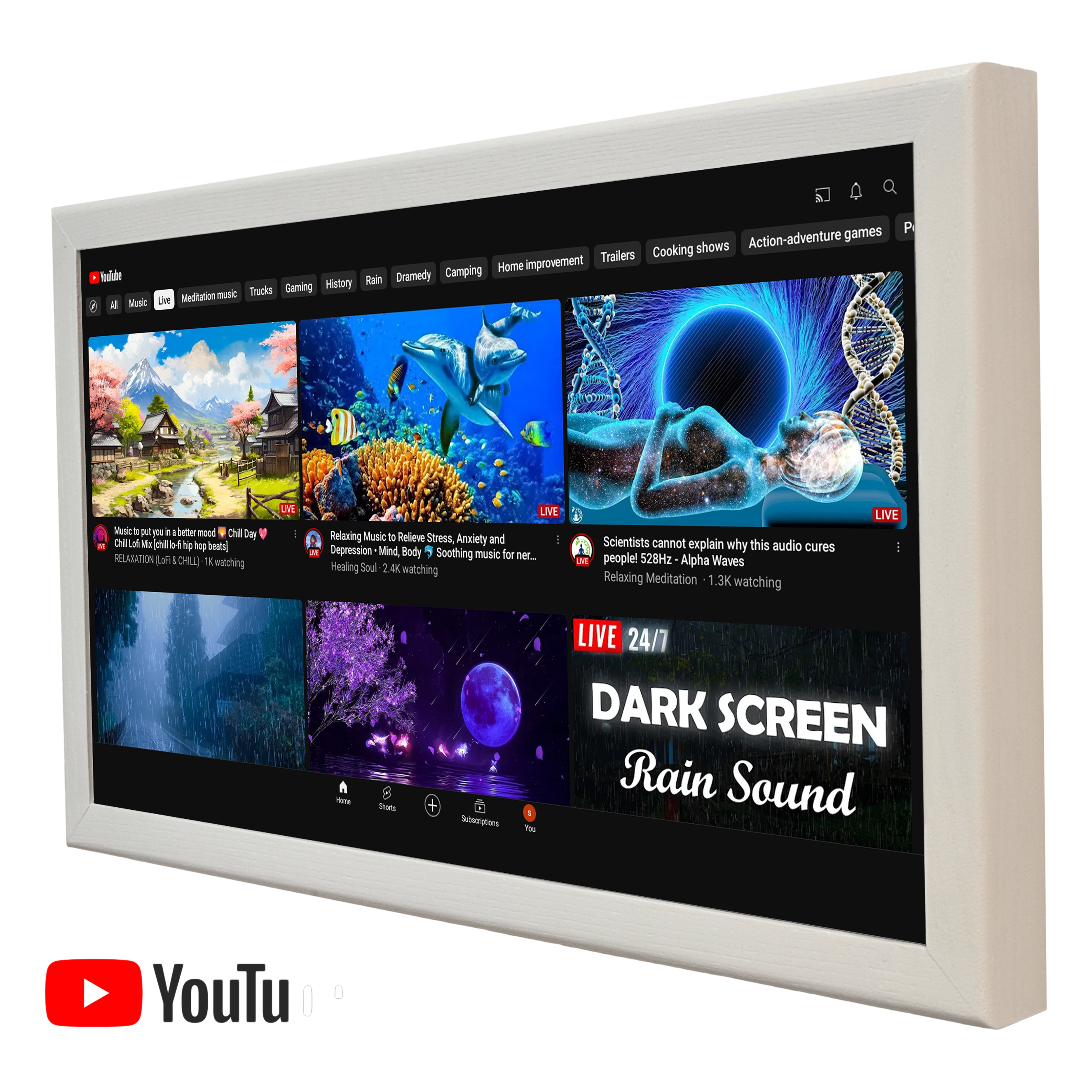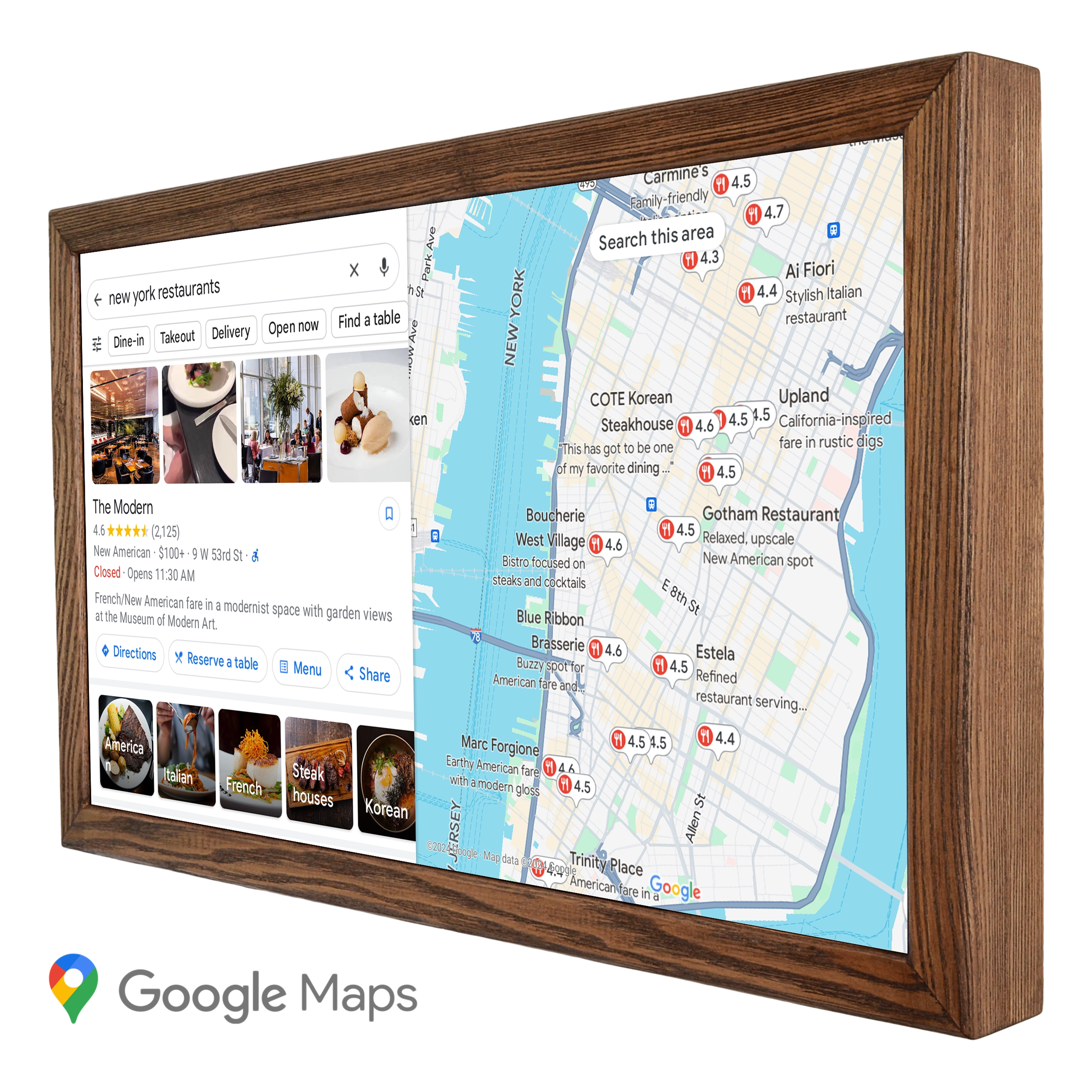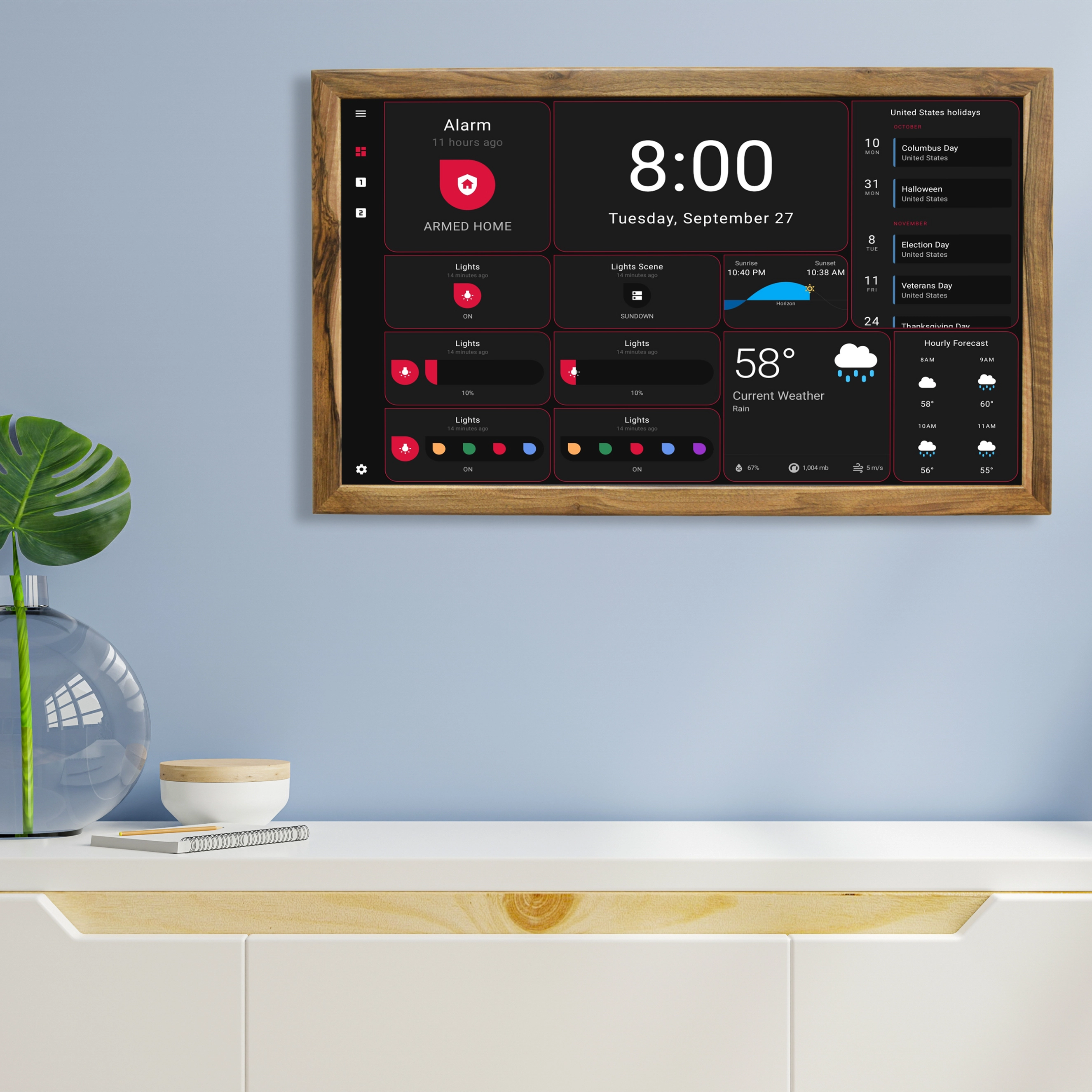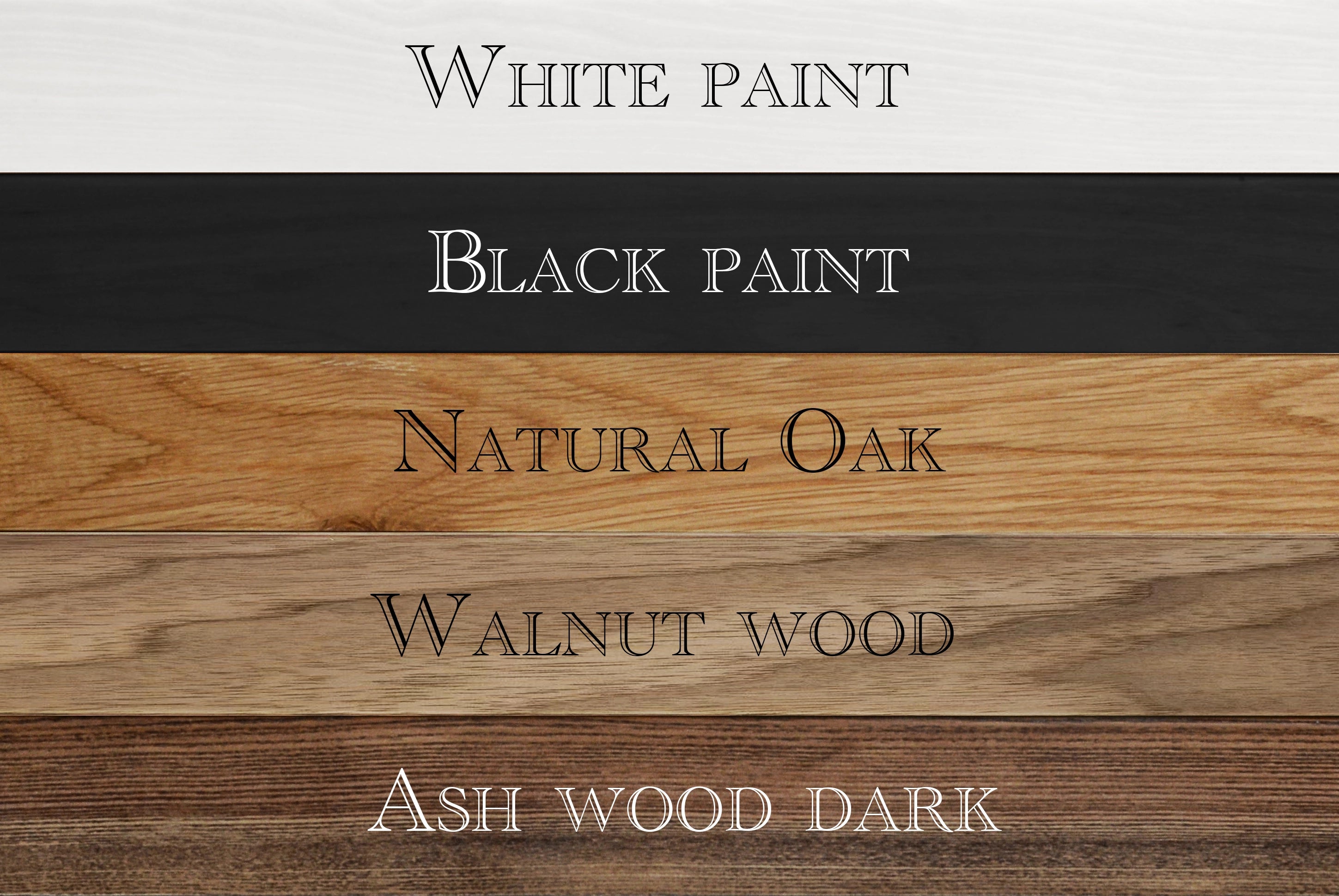If you're not a fan of long articles, we can give you a straight answer right away: what sets Dakboard apart from MagicMirror is the ease of setup and configuration of Dakboard. MagicMirror was primarily designed for people with certain IT skills and an engineering mindset. But if you want to dive deeper and compare Dakboard and MagicMirror for yourself, then read on. As a reminder, we’ve already done a detailed analysis of Dakboard vs. Skylight.
What is MagicMirror?
Let’s now turn to MagicMirror and where it came from. There’s an amazing person, Michael Teeuw (link), who created a wonderful expandable platform for smart mirrors. It’s worth mentioning that it doesn’t have to be a mirror—it can be used as an information panel for the whole family. But originally, the idea was exactly that. Why is this important? Because it explains the look of the MagicMirror interface—it’s black and white. Why, you may ask? The answer is simple: behind a special two-way mirror (like this one, link), which is see-through from one side, a display is placed. With proper lighting, everything black on the screen appears as a mirror. Everything light or white will shine through the mirror and be visible from outside. That’s why the MagicMirror interface is designed in black and white. But again, you don’t have to bother with a mirror—you can use the platform as is.
How Dakboard and MagicMirror are similar and different
So what do MagicMirror and Dakboard have in common, and why are we comparing these two seemingly different products?
Both platforms are designed to create smart information panels that can display family and personal calendars, shopping lists, reminders, weather info, and other useful data. That is, both platforms aim to make planning easier for your family and help you stay more organized.
Both systems run on Raspberry Pi, and when placed in your home, can become your personal assistant.
However, MagicMirror is a free, expandable platform where any user can create their own modules and share them with others. Thanks to such enthusiasts, MagicMirror has extremely wide functionality. You can even avoid using any pre-made modules and write your own entirely.
Dakboard, on the other hand, is a closed platform where all functionality is defined by the platform developers (which, we must say, is a big plus—you’ll see why if you read to the end of the article). To use the platform, you need to create an account at dakboard.com and choose a subscription. As usual, there is a free option and several paid ones. Naturally, they differ in features. But let’s go step by step. You can try the paid subscription free for a month to see if the platform suits you.
How to configure and manage MagicMirror and Dakboard
All MagicMirror modules (called widgets) are configured through the config.js file. There you can enable/disable modules, change their position, language, themes, etc. To access the system, you’ll need to install a remote access program on your computer, such as PuTTY.
If this screen copy looks familir to you, than MagicMirror can be an option for you.

Popular modules for MagicMirror and Dakboard
MagicMirror is built on Electron and Node.js. When launched, it creates an HTML page that opens automatically at system startup. This is where the modules appear. There are built-in modules (Clock, Calendar, Current Weather, Weather Forecast, News Feed), as well as many created by the enthusiast community. There's plenty of interesting and useful stuff. Here are a few of the most popular modules—there are over a hundred in total:
• Google Assistant integration
• Voice control
• Facial recognition
• YouTube
• Sports results tracking
• Instagram feed
Below you can see how MagicMirror default screen looks like with only default modules installed. Not that appealing, yeah?

So it makes sense to add several custom modules. Let’s say you love going to concerts and events but often miss them. With the flood of ads, spam, and posters, you only find out about some events a day or two in advance. A MagicMirror module that can optimally filter event information would be very useful in this case. If you want to see an example of such a module and what came out of it, here’s the link: https://github.com/polarbearjngl/MMM-KudaGo
There you’ll also find instructions for configuring the module for MagicMirror.
You can also come up with and create a module useful to the community and share it on the MagicMirror project page.
Dakboard modules are blocks that you simply select from a list, add to the screen, and drag to the desired position.

You can also control the block size and the fonts used to display information. Each block has its own settings available in its configuration panel.
As of May 2025, Dakboard supports over 100 integrations, including:
• Calendars: Google, Apple, Microsoft Office365, Cozi, Yahoo, TeamUp
• Todo lists: Microsoft Todo, Google Tasks, Trello, Asana, Todoist, Dakboard Todo
• Photo services: Google Photos, Apple Photos, Microsoft OneDrive, Dropbox, Flickr, Bing, Reddit, Smugmug, Giphy
• Smart home integrations: Home Assistant, SmartThings, Ecobee, and Google Nest thermostats (note: smart home integrations require proper setup and internet access)
Other blocks and integrations include financial data display, national holidays and special dates, sports tracker integrations, news feeds, weather forecasts, traffic info, and mail tracking status—in short, everything you need for daily life and planning ease.
In this table, we compare Dakboard and MagicMirror and list their main differences:
| Feature | Dakboard | MagicMirror |
|---|---|---|
| Calendar integration | ✓ | ✓ |
| Weather information | ✓ | ✓ |
| Photo frame mode | ✓ | |
| Control via any browser | ✓ | |
| Full-color interface | ✓ | |
| Ability to install custom modules | ✓ | |
| Manual module configuration required | ✓ | |
| Special IT knowledge required | ✓ |
Another key difference between Dakboard and MagicMirror is how you can use the systems.
MagicMirror is completely free because it's open-source and licensed under MIT. Modules developed by enthusiasts are also freely available.
Dakboard, however, requires account creation and choosing a subscription model. There’s a free and three paid plans. The minimum paid subscription starts at $4.99/month. It’s worth noting that even the free subscription offers extensive functionality and is a great choice for basic needs. A 30-day trial of the paid subscription is available to explore the system’s capabilities. After that, you can continue with one of the paid plans or switch to the free version.
All in all, if you're comfortable using the command line, writing scripts, don’t mind spending a day setting up modules, have free time, aren’t put off by a black-and-white interface, and most importantly—if you prefer full control over everything, then give MagicMirror a try. We offer pre-assembled, ready-to-use wall smart displays based on MagicMirror.
If you want a ready-made product without thinking about how it works inside and just want to use it comfortably, Dakboard is probably the better choice for you. We also offer Dakboard smart displays. The choice is yours.
If you have questions about which is better—Dakboard or MagicMirror—write to us in the online chat or by email, and we’ll be happy to provide more information.
